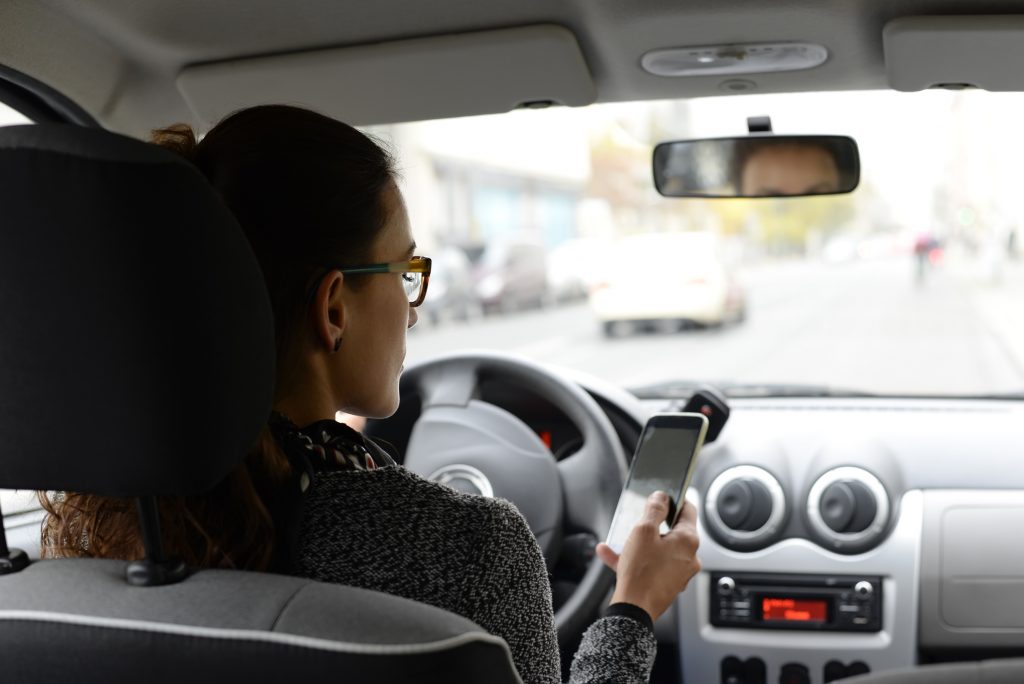Distracted Driving Surges Since Start of Pandemic

By Max Dorfman, Research Writer, Triple-I
Distracted driving in the United States has risen more than 30 percent from February 2020 to February 2022, as the coronavirus pandemic has upended driving patterns, according to a recent report by telematics service provider Cambridge Mobile Telematics (CMT). This comes despite improvements in other dangerous behaviors, like speeding, which has declined as traffic returned since the early phases of the pandemic.
Drivers in January 2022 averaged 1:35 seconds of distraction per hour, a high for the past three years. Additionally, in February 2022, this figure increased to 1:38 seconds – a 25.5 percent increase from February 2019, and a 30.3 percent rise from February 2020, which was the last month of pre-pandemic driving.
Additionally, evening and late-night distracted driving has dramatically increased compared to pre-pandemic levels, with evening distraction ballooning to almost 35 percent from February 2020 to April 2020. Late-night distraction has become even worse, with 40 percent of drivers in the same period. This trend has remained high, with the average time distracted standing at 1:29 seconds per hour by February 2022 for late-night driving.
The U.S. government takes notice
Recently, the Governors Highway Safety Association (GHSA) released a report detailing data limits and other barriers to limiting distracted driving. The report found that approximately 3,142 people died in distraction-related accidents in 2020, with an estimated 400,000 people injured each year in such crashes. The true numbers, according to the study, are likely higher due to underreporting.
The GHSA report also notes that the most prevalent and highest-risk behaviors include:
Cell dial;Cell text;Reaching for an object;Cell-browse and;In-vehicle device.
A total of 15 percent of police-reported motor vehicle traffic crashes recorded distraction as a factor, according to national crash data, with drivers aged 15 to 20 years at the highest risk for distracted driving in a fatal crash.
This comes despite 80 percent of drivers stating that talking on a hand-held cell phone is extremely or very dangerous. However, 37 percent admit to doing this. Almost all drivers (95 percent) said reading or typing a text or email on a hand-held cell phone while driving is extremely or very dangerous. However, 23 percent reported typing or sending a text or email on a hand-held cell phone at least once in the past 30 days, with 34 percent stating that they read on a hand-held device while driving.
Can telematics help?
A 2020 study by Triple-I’s sister organization the Insurance Research Council (IRC) focused on public perception and use of telematics, which can be used to lower the cost of insurance for responsible drivers.
Indeed, 45 percent of drivers surveyed said they made significant safety-related changes in the way they drove after participating in a telematics program. An additional 35 percent said they made small changes in the way they drive.
And although many individuals who made small or significant changes ultimately return to previous driving habits, one in four participants reported that they consider the changes made to be permanent, with an additional 19 percent saying they engaged in previous driving habits only rarely.
These kinds of shifts in behavior hold promise not only for the future of telematics, but for safer roadways with significantly fewer accidents.





